
The Enthronement Ceremony of His Eminence the Domo Geshe Rinpoche Lobsang Jigmey Ngak-gi Wangchuck
by Piyaporn Erbprasartsook
Startled alert from my reverie by the sonorous rumble of the huge 12 foot radongs, the Tibetan long horn, a sound so deep that it has been described as issuing from the depths of the earth, I craned my neck eagerly, eyes alert for the arrival of His Eminence, camera at the ready.
The distinctive smell of butter lamps and incense pervaded the main shrine room. The assembly of devotees waited in patient reverence. Two rows of lama musicians splendidly dressed in full regalia complete with rich brocade vests and yellow curved hats preceded the entrance of His Eminence the Domo Geshe Rinpoche Lobsang Jigmey Ngak-gi Wangchuck.
His Eminence was respectfully carried into the prayer hall in the arms of a young lama. Ancient music from cymbals, base drums, oboes heralded the arrival. Outside, the deep sounds of the radongs rumbled on. The welcoming ceremony for the 4 year old Tulku took about two hours.
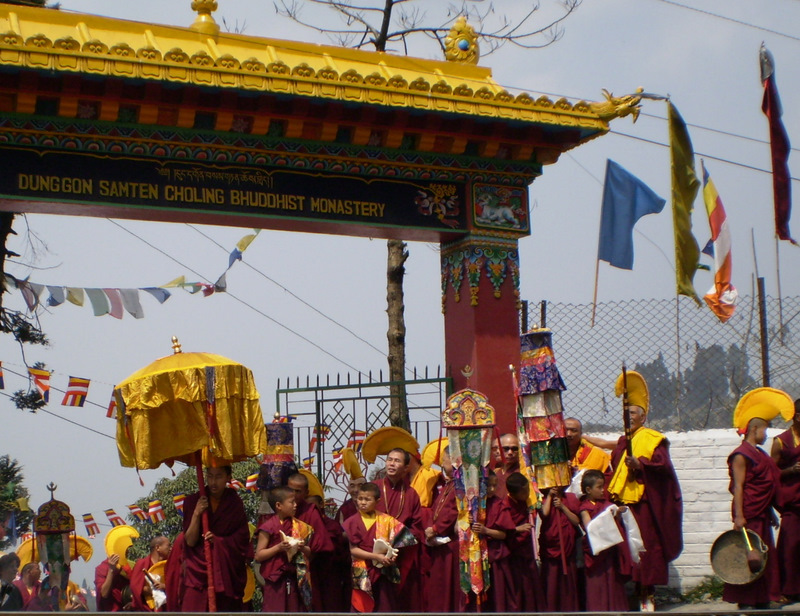
We were all agog at the fluid display of age-old rituals performed by the young abbot of Sera Monastery, an affiliate monastery in south India. It was 28 March 2008. His Eminence, dressed in the robes of a high monk and yellow curved hat, sat solemnly on the raised throne at the center of the hall facing the entrance.
Facing him sat the row of senior lamas with ritual implements which include vajras (ritual sceptres), bells and damarus (small hourglass-shaped drums that is held in one hand) on chogtses which are maroon-coloured intricately carved low tables. To His right two umdzes (chant masters) and a chorus of monks faced the opposite row comprising of distinguished guests and high lamas, together thus forming a square. The master-of-ceremonies, an energetic elderly monk helped guide the ceremony from within the square.
A serenely majestic Buddha Sakyamuni of over three meters in height, with many other statuettes, as well as skilfully made torma offerings (colourful conical ritual cakes made of tsampa – ground hill barley) and rows of water bowls form the backdrop of the setting. Monks whose ages range from 6 to 80 years and lay devotees sat around the packed hall.
Above us hung magnificent thangkas. Every inch of the walls around us was freshly painted with religious murals. Incense smoke wafted around and danced in the brilliant rays of sunlight streaming down through the vents above. Outside the hall many more devotees sat in silent devotion under a large canopy.
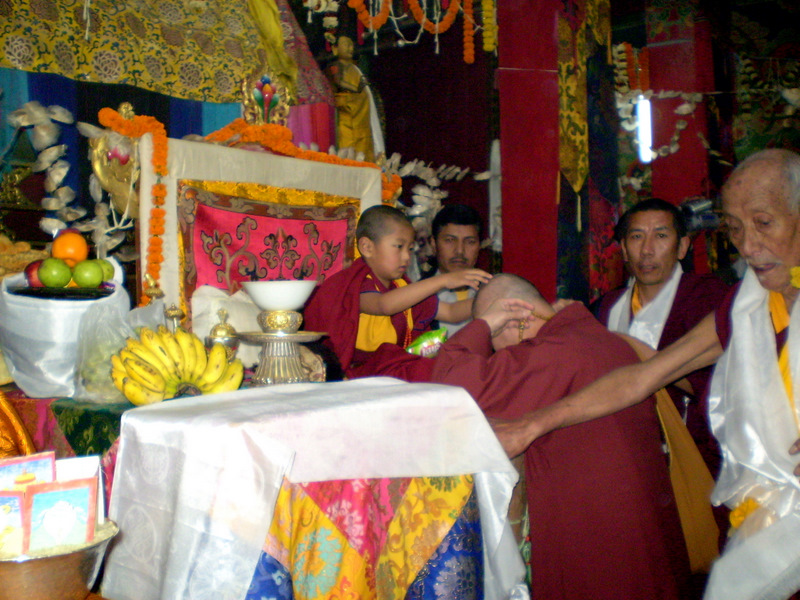
I left Bangkok on 22 March 2008 for Singapore and stayed two nights at the home of my dhamma sister Patricia Ho. Patricia is a lay member of the Order Arya Maitreya Mandala Singapore Regional Centre whose Upacharya, affectionately addressed as Guruji by his followers, is the Venerable Anandavajra Mahasthavira Dharmacharya, the spiritual heart son of the founder Lama Anagarika Govinda.
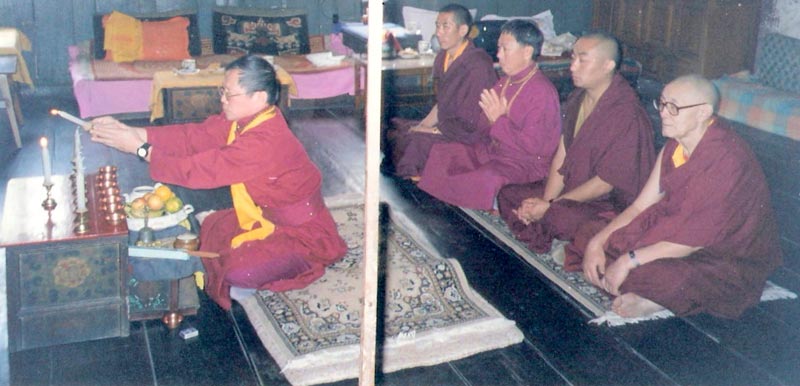
Lama Govinda was the chela (disciple) of the first Domo Geshe Rinpoche, the Most Venerable Tulku Lama Geshe Ngawang Kelsang. With the blessing of Domo Geshe, Lama Govinda founded the OAMM on 14 October, 1933 in Darjeeling and brought it to the West with the noble aim of assisting those people born and brought up there who sincerely wish to understand and practice the Dharma.
He was a celebrated prolific writer who helped to introduce Tibetan Buddhism to the west and happily also to some of the English-educated in the east, through his many books amongst which, is the well-regarded “The Way of the White Clouds” in which he chronicled his journeys in India and Tibet, vividly capturing episodes with their nuances and in particular his experience as Domo Geshe’s disciple.
A quote from the book: On the day on which he formally accepted me as his Chela, he said: ‘If you wish me to be your guru, do not look upon my person as the Guru, because every human personality has its shortcomings , and so long as we are engaged in observing the imperfections of others we deprive ourselves of the opportunities of learning from them. Remember that every being carries within itself the spark of Buddhahood (bodhicitta), but as long as we concentrate on other people’s faults we deprive ourselves of the light that in various degrees shines out from our fellow-beings ……………..unquote. Indeed!
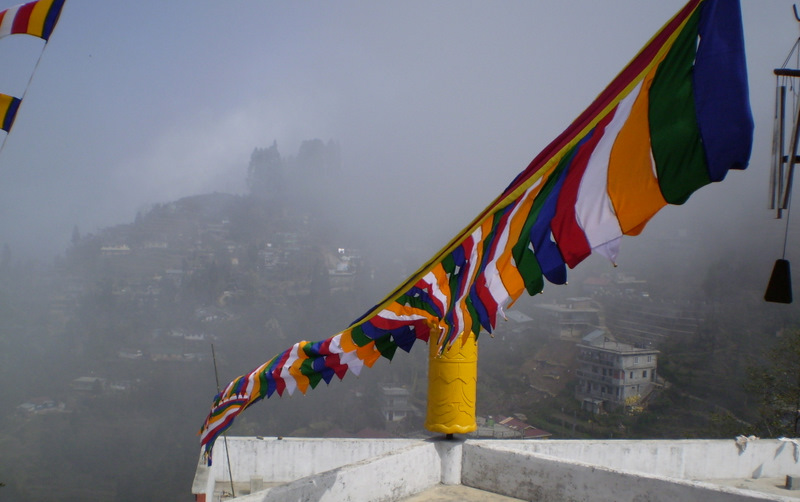
My trip to the foothills of the Himalayas was made possible by the invitation of the General Secretary of Dungun Samten Choling Monastery, Ghoom, Lama Ngawang Chodar through the OAMM Singapore. Samten Choling Monastery is the principal monastery of Domo Geshe Rinpoche.
Our group of 11 OAMM members comprising Singaporeans, a couple from Sydney, Australia and myself left on the evening of 24 March for Kolkata, Bengal, India. Sonam Sherpa, a benefactor of the monastery met us at the airport and escorted us to the hotel. He accompanied us throughout our sojourn in India.
After staying the night at the luxurious Grand Hyatt chosen for its proximity to the airport, we boarded a domestic flight and arrived at Bagdoghra the next day in the early afternoon. We breezed out of the airport and were given the traditional welcome, the offering of khadas (silk scarves), by a group of five monks led by Lama Chodar. Numerous porters helped load our luggage onto a convoy of taxis accomplishing the work in no time.
All of us piled into the taxis and made our way up to our first destination Darjeeling, a historical hill station of the former British Raj, or more correctly to Ghoom, situated some 2245 meters above sea level, a village a short drive from Darjeeling . Excitement was palpable and there were enough interesting sceneries, some breathtaking, to keep our interest and spirits up.
After leaving the airport, we passed through the rustic township of Siliguri, a dry river bed, sprawling tea plantations before driving through forests where tigers were sighted not so long ago. Along the three and a half hour journey up the mountains we stopped for a toilet break at a scenic lookout point from where one can look down a few thousand feet at the confluence of three rivers that join to the great Tista .
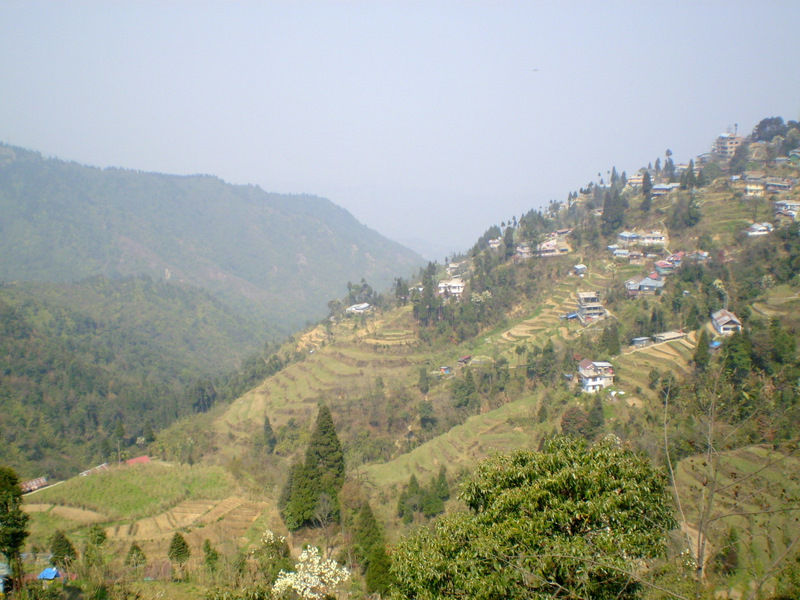
Another stop was for a tea-break at one of the few villages that line the winding mountain road up in the cooler air of the mountain. Again we were treated to a panoramic view of mountains in the background and verdant valleys below. However, the last hour or so of the journey to the monastery was navigated in dense fog so thick that visibility was reduced to a few metres. Kudos to the drivers who obviously knew the road so well that there was no noticeable reduction in speed and we arrived at the sanctuary of the monastery in good time in the ethereal misty darkness.
A long line of monks from the abbot to the little novices greeted us with such warmth and joy that our tiredness evaporated. We were shown to our lodgings and were pleasantly surprised at the clean well-appointed interior which boasts modern toilet and shower facilities and running hot water. We were ecstatic. Dinner was wholesome.
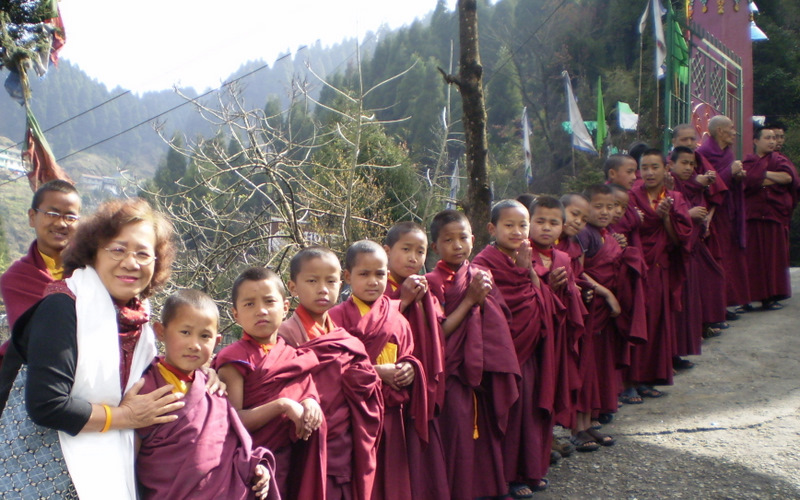
We woke up the next day to a clear crispy morning with the sun shining and a tantalizing glimpse of the elusive snow-capped spiritual mountain Kanjengjunga, the third highest mountain in the Himalayan range, as it appeared briefly through the clouds. Outside, the famous narrow gauge ‘toy’ train whistled and chugged passed on tracks just outside the monastery. The monastery nestles snugly on a cliff ledge below road level.
We had 2 free days before the ceremonies began. The first free day was spent exploring the monastery grounds and soaking in the ambience of Vajrayana, the Diamond Vehicle. We circumambulated the main prayer building, turning the mani-cho-khors (brass prayer wheels) as we slowly went round.
A beautiful Nirvana stupa commemorating the founder of the OAMM, Lama Govinda, is sited near the entrance to the monastery. Information on this revered personality can be found at the websites bearing his name. The monastery was established in 1954 with the first group of senior monks arriving from the Dromo Valley in Tibet, not far from the common border of Sikkim and Tibet. It belongs to the Ghadenpa Order founded by the great Lama Tsongkapa.
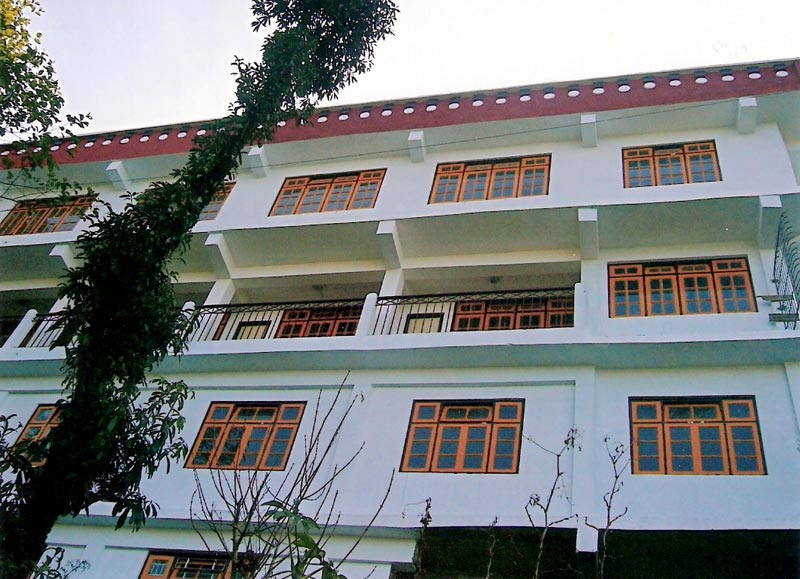
The monastery complex consists of five structures, a three-storey building housing the main shrine hall, a monks quarters, the Nyungne Lakhang ( the chapel where devotees assemble to observe fasting and retreat during certain festivals), a two-storey block housing the office on the upper level with the ground floor shared by a spacious kitchen and a meeting cum reception room, and a new 4-level annex hugging the cliff-face housing dormitories, a library, incense-making workshop, guest quarters, classrooms and storage spaces.
Over the years animal husbandry was practiced. A herd of cows kept the monks self-sufficient in milk, butter and cheese with the surplus sold. The spacious cow-sheds are neatly tucked away in a far corner of the grounds.
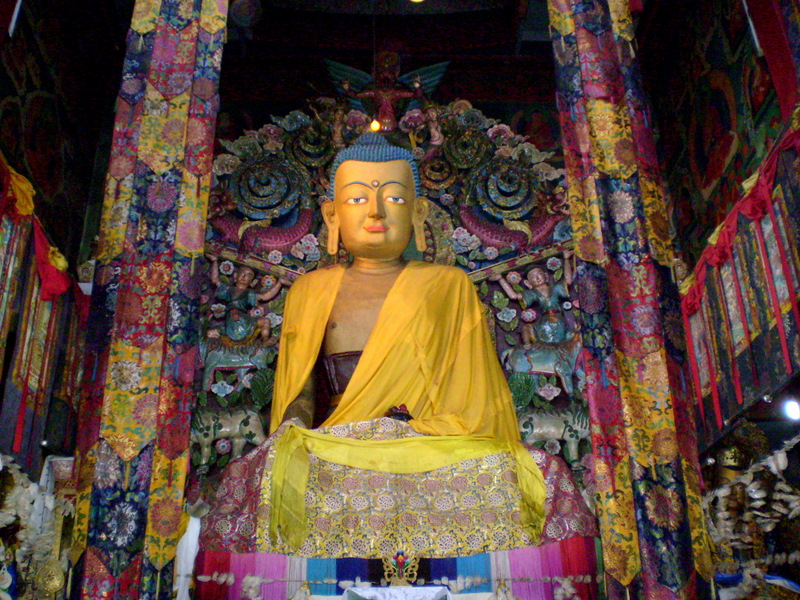
The main shrine hall with its Buddha statues, lineage figurines and thangkas evokes a sense of peace and quiet joy in all of us. We were fortunate to be invited to participate in the OAMM puja that the Venerable Anandavajra conducted in the very same hall in the morning of our second free day there.
Tomo Geshe Ngawang Jigme Choekyi Wangchuk the second Kyabje Domo Geshe Rinpoche passed on in upstate New York a day before the 9th September 2001 attack on the Twin Towers. Tenzin Namsay Dorjii was born to Sikkimese parents two years later on 2nd June 2003.
The long search ended happily in 2006. His Eminence was found after painstaking arcane procedures of divination by Kyabje Trijang Choktrul Rinpoche. The parents are related to the late Rinpoche – a happy coincidence indeed. Many are of the opinion that the little Tulku bears an amazing resemblance to his predecessor.
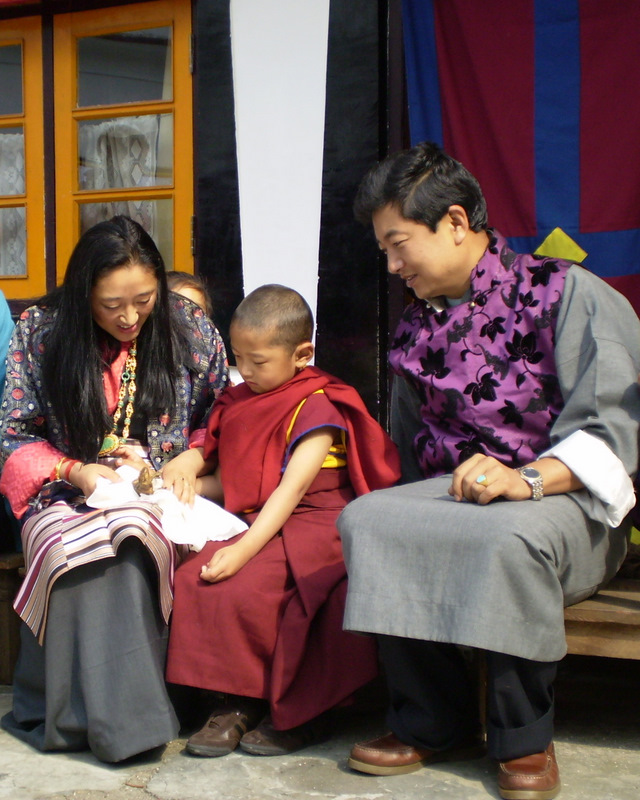
A large tent – made from parachute material we were told – provided shelter from the elements which it did, as a heavy rainstorm came crashing down on the lama dance festivities which took place in the large courtyard in front of the main prayer hall in the afternoon after the awe-inspiring enthronement ceremony in the morning.
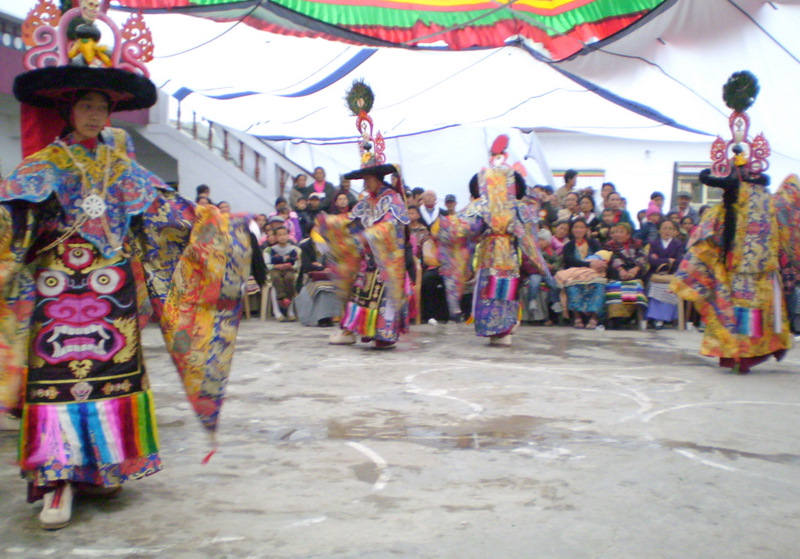
The enthronement ceremony took place on the bright sunny morning of the auspicious day of 29 March. Again we were treated to another unforgettable spiritual experience. To describe the various intricate rituals and elaborate traditional offerings to His Eminence … is obviously way beyond my limited ability and understanding.
Nor could I follow the details of the liturgies chanted in the incredibly low deep voices of the umdzes leading the harmonious chorus of monks. Silvery voices of the little monks blend with the deep tones of the older rising and falling in cadence. The accompanying orchestra came on in-between chants, beginning at a slow rhythmic pace that progressed to a crescendo, created in part by the surging waves of sound produced by the skilful rotating movements of the large cymbals.
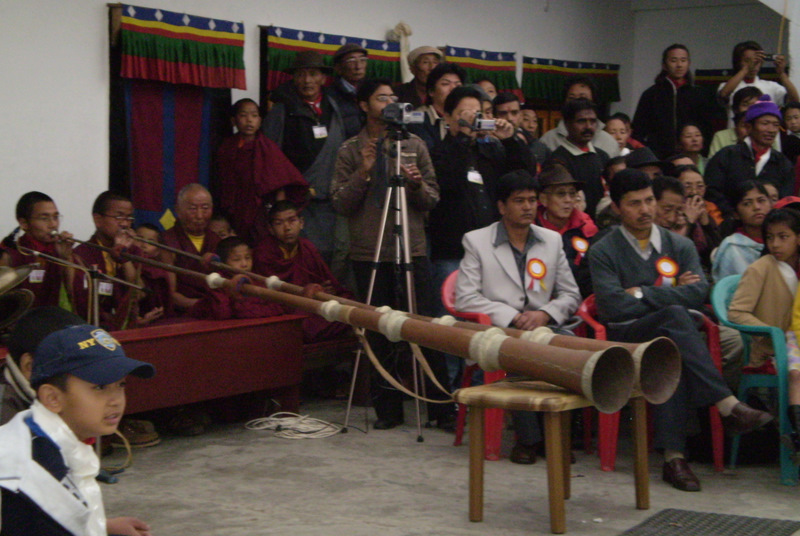
Suffice to say that we all felt rather blessed indeed to witness such an awe-inspiring event. The elaborate ceremony took up the whole morning and at the end of which a long queue of faithful devotees from near and far proffered offerings and received blessings from His Eminence. The little Tulku displayed an air of solemnity and maturity that belied his tender age. We could only watch in wonder and profound respect.
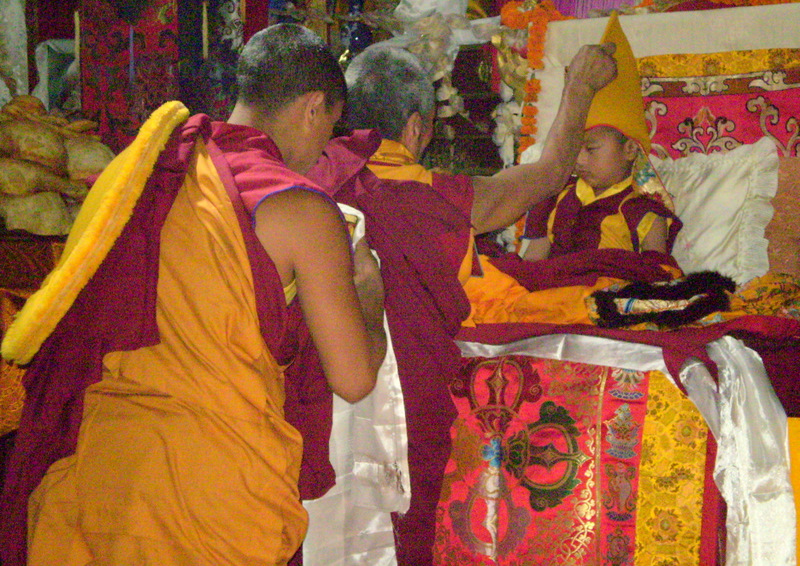
Although arrangements were prepared for 300 or so invited guests, well over a thousand arrived from near and far. The seemingly inexhaustible supply of food and refreshments was amazing. A large multi-national gathering of Rinpoche’s devotees from all over the world came to participate in the Event. A minister, a member of parliament, representatives from the consulate of the United States of America were there, as were High Lamas and Buddhist scholars.
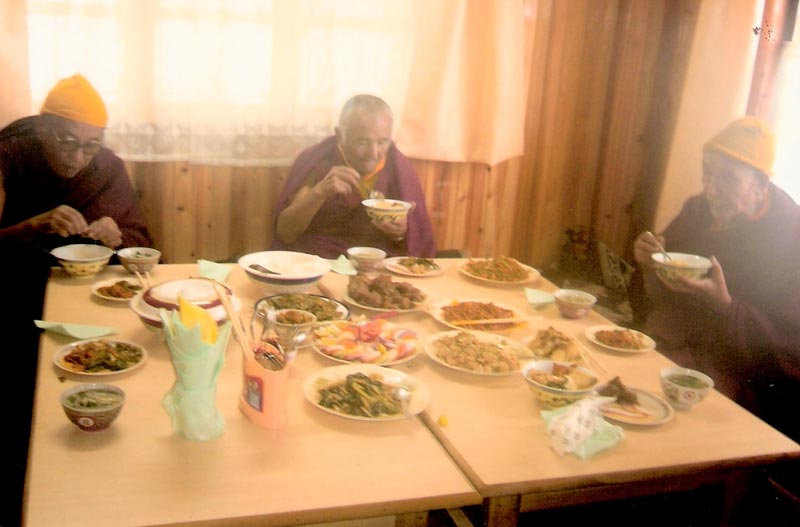
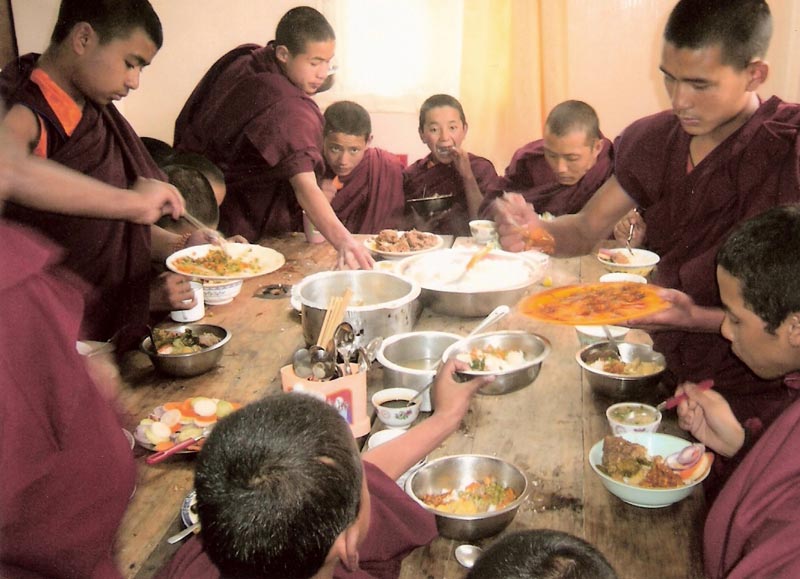
Although the first Geshe Rimpoche appeared towards the end of the nineteenth century, his lineage dates back to the time of Buddha Sakyamuni. The Lord of the Siddhas, the first Domo Geshe spent 12 years in seclusion in caves and retreats in the mountainous wilderness of Southern Tibet before returning to ‘civilisation’ as an ineffable spiritual guide to those fortunate ones who came into contact with him.
More than 150 years ago, Tomo Geshe Rinpoche built a monastery shaped like a white conch-shell called Dungkar Gompa in Tromo, Tibet. Rinpoche subsequently founded three more monasteries, Tashi Choling Monastery at Kurseong in 1919, Tharpa Choling Monastery at Kalimpong in 1922 and the Pedong Ghaden Monastery also at Kalimpong in 1924.
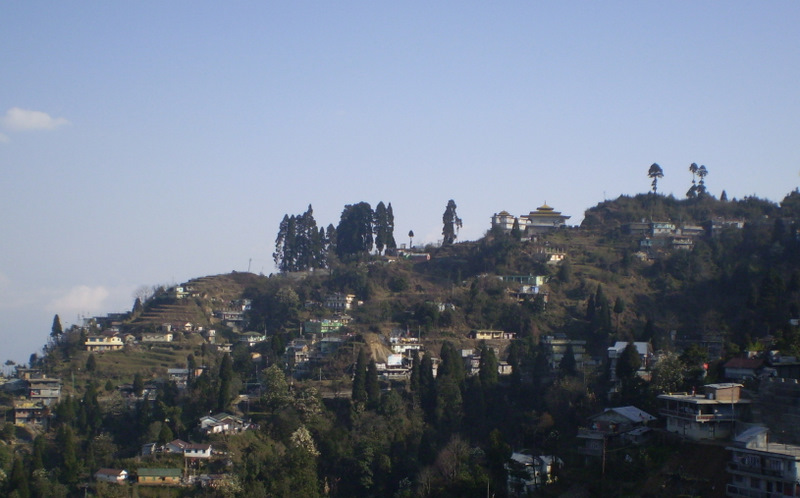
A quote from the press release, “ In today’s troubled world the significance of the return of such a compassionate emanation cannot be over-emphasized. His two previous incarnations were non-sectarian and showed equal kindness to all. Like the Kadampas, they hid their enlightened deeds ( which pervaded all realms and levels ) and were indeed praiseworthy in that they praised only the Buddha with their pure deeds. This auspicious occasion is truly a joyful day for the Dharma and for all devotees!
Excerpts from Domo Geshe Rinpoche’s biographical sketch by Dr Ursula Bernis: ‘Tromo was completely changed by Domo Geshe Rinpoche’s presence. The Bonpos at Pemakung sent yearly New Year offerings to him at Dungkar Gompa as did the Nyinmapas from nearby Kyiruntsel, where a room was kept ready in the monastery for Domo Geshe Rimpoche.
Eventually Domo Geshe Rimpoche instituted several practices that brought the people of Tromo together in greater harmony. One of these was a yearly joint reading of the twelve collective works (Sungbum) at Kampu Dzong in Upper Dromo by the different religious traditions.
Another practice was a special Guru Rinpoche (Padmasambhava) ritual. Dungkar Gompa had acquired an especially holy Guru Rinpoche statue, said to have been blessed by Padmasambhava himself. When the owner was on the way to India with the statue, it spoke when passing Dungkar Gompa.
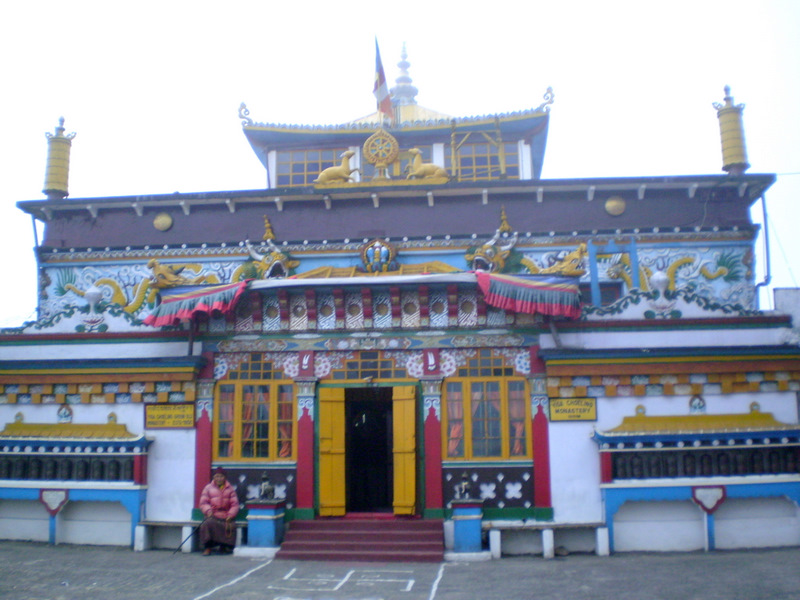
“Take me to where the sound is coming from,” it said, as the long trumpets sounded from the monastery on the hill. The man did, and Geshe Rinpoche gave him what he needed. Not much later, it is said, Domo Geshe Rinpoche found a Guru ‘fulfillment of wishes’ (thug-drup) text near Dawa Trag, a rock not far from Dungkar Gonpa bearing a spontaneous manifestation (rang-jon) of a moon.
Shortly thereafter, someone came with many copies of the same text for sale. Geshe Rinpoche bought all of them and, once a year the Dungkar Gompa monks performed the ritual. This tradition continues today and the ‘Jangtir Thug-Drop Choega’ is done for a week on the 10th day of the 2nd Lunar month annually”
On the morning of 30th, a long convoy wended its way down the mountain in good weather to Tashi Choling in Kurseong. A simple ceremony preceded the long stream of villagers who patiently waited to receive the blessings of His Eminence and to make offerings to Him. We were treated to a refreshingly light buffet lunch and returned to Samten Choling in late afternoon where we rested and partook of another sumptuous dinner in relative comfort.
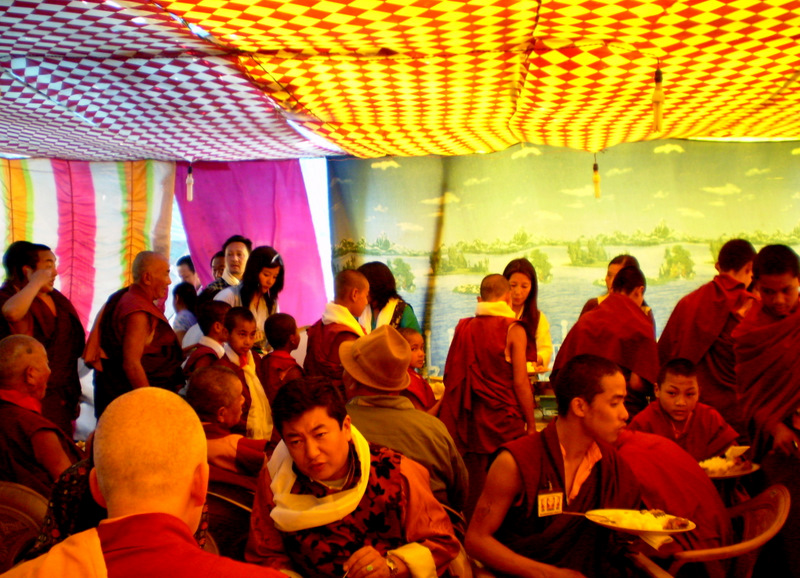
After a good night’s rest the convoy made its way to Pedong, Kalimpong. All of us were in high spirits as the convoy steadily wound its way down the mountain . The air became noticeably warmer as panorama after panorama unfolded. We were treated to whole hillsides of lush green foliage of the famous Darjeeling tea plantations. The convoy arrived at Pedong in mid-afternoon. The large group assembled on a large grassy plain the size of about six soccer fields. The retinue promptly established a dais for His Eminence to sit on. A long stream of local devotees filed by to greet His Eminence, receive His blessings and proffer offerings.
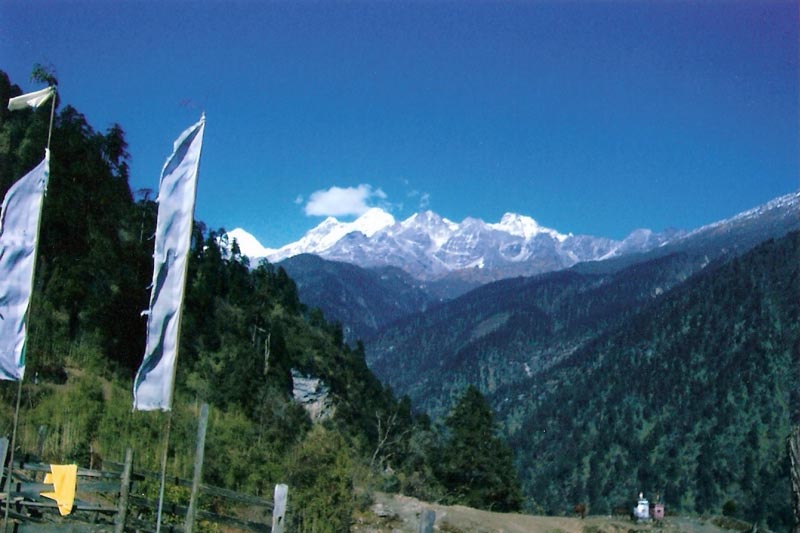
The convoy resumed its journey in near dusk down into the warm Tista valley and made its way to Gangtok, the capital of the state of Sikkim, the twenty-second state of India. All of us had to disembark for about an hour for our visas to be processed at the bustling border town of Rangjong. Gangtok is the hometown of Rinpoche’s parents. We arrived in the chilly darkness of night in intermittent rain. The sheer number of devotees made it impossible to house all of us under one roof. As such we were split into a few groups staying at different hotels. One group stayed at the Rinpoche’s house.
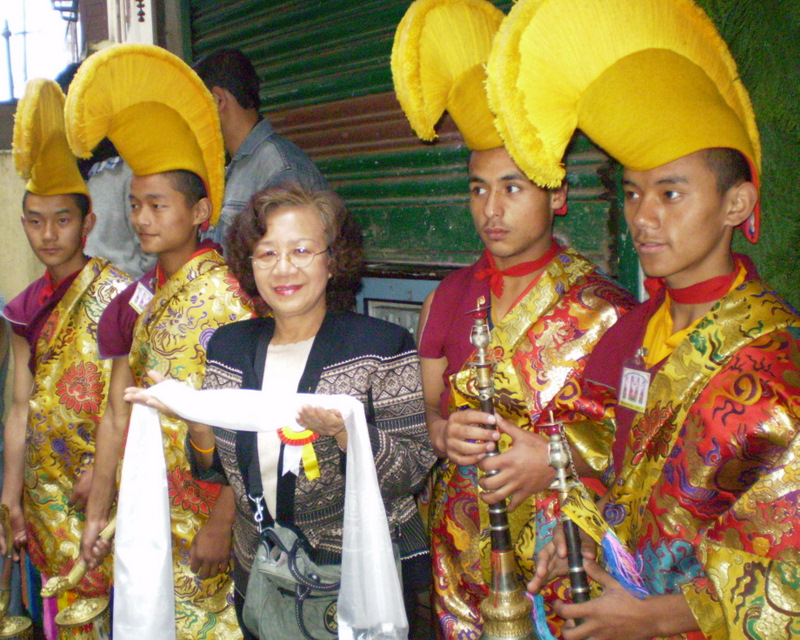
The next day, 1 April, we made our way from the hotel up the steep Tibet Road to Enchey Khoti, the birth place of the Second Domo Geshe Rinpoche. It was a warm sunny day. Enchey Khoti is a very old wooden structure on raised flooring that houses a large prayer hall containing artifacts of the previous Domo Geshe, all of which has been kept scrupulously spick and span by one of his attendants, a saintly old lama, Ngarampa-la, who by the way, had been beside himself with joy since Rinpoche was found.
A huge crowd of devotees lined both sides of the road. Most simply stood still with heads reverentially bowed as the entourage slowly drove past them. The simple ceremony was graced by local dignitaries and high Lamas. Once again we wondered in awe at the rickety-looking ancient wooden building’s sturdiness to bear the load of so many people in constant motion.
Throughout the long morning His Eminence again manifested great composure and maturity beyond his tender age. Very soon the ceremony was over and one by one the devotees reluctantly but blissfully departed. We too returned to our hotel, a fifteen-minute walk away.
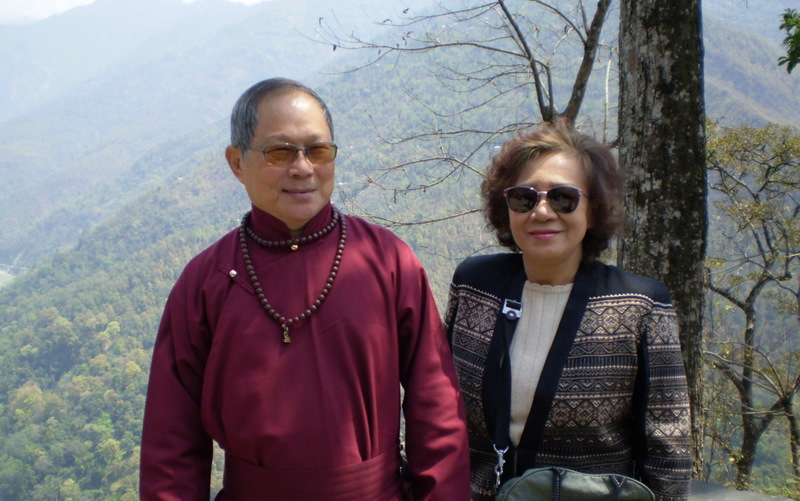
After a quick freshening up, we were ferried in taxis to have dinner hosted by Rinpoche’s parents at their home, the culmination of an unforgettable episode in our lives. It was a congenial gathering of people of many nationalities and professions with a common purpose; different nationalities using English, spoken or translated, as the medium of open, uncontrived interaction and communication ……surely a luxury that seldom happen in this materialistic world. Tired and a little bit cold but with mind blissfully at peace, we were eventually brought back to our respective hotels.
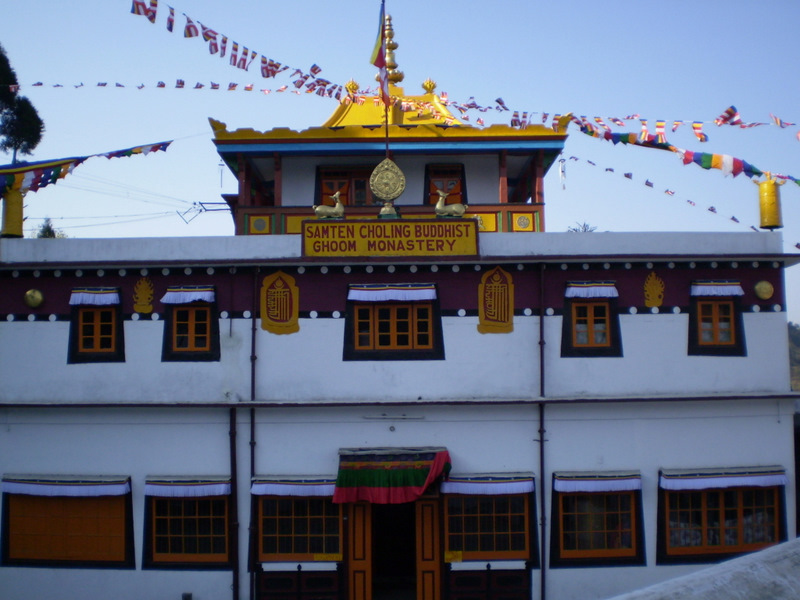
Gangtok is a mountain township located some 1700 meters above sea level. In addition to the Indian visa, the traveller must obtain an inner line permit to visit Sikkim After some obligatory sight-seeing in and around Gangtok, we returned to Ghoom in a much smaller convoy.
It was like a homecoming; the warmth of the reception was overwhelming and it was with a tinge of sadness that we bade goodbye on the morning of 3 April to all the monks and devotees as we set out to retrace our long journey back to our livelihoods imbued with some semblance of tranquility and feelings of fellowship with one and all.
Taken from www.wfb-hq.org








































 English
English Indonesia
Indonesia Tibetan
Tibetan
昌都地区类乌齐县多杰雄登保护协会
December 18, 2009
欢迎您们到西藏昌都地区类乌齐县甲桑卡土登达吉林寺来“““`
赤江仁波切 嘉杰——帕邦咔仁波切 贡萨仁波切 岗坚仁波切
格西——格桑江措 NKT 罗登西绕仁波切 札贡仁波切 札那仁波切 詹杜固仁波切
以及所有维护纯真罗桑扎巴教义的活佛 堪布 格西等““`
希望您们来西藏昌都地区类乌齐县甲桑卡土登达吉林寺弘扬格鲁派教义。
请大家与我联系:13989053823〈向巴〉[email protected]
Sarah
November 21, 2010
A very interesting and detailed account of the spiritual experiences of a Thai devotee. I enjoyed looking at the pictures. The monasteries are beautiful and the young Domo Geshe Rinpoche looks so solemn and dignified.
vajrastorm
December 2, 2010
The Enthronement of the five year old Tulku Domo Geshe Rinpoche ( the third incarnate of the Domo Geshe Rinpoche lineage) was celebrated ,on 24 March 2008, in a highly colorful, resplendent and awe-spiring ceremony, filled with tradition and rituals.
This was a celebration of great splendor and magnificence, as befitting the ‘Return’ of a very compassionate Holy Being. This Enthronement speaks loud and clear for the Tibetan Buddhist tradition of incarnate lamas or ‘tulkus’ and spiritual lineages.
This incarnate lama – H E Domo Geshe Rinpoche – was recognized in a painstaking tradition-rich divination procedure conducted by Kyabje Trijang Choktrul . HE Domo Geshe will carry on the precious lineage of teachings and practices of the first Kyabje Domo Geshe Rinpoche, whose kindness and compassion for all was, and still is, legendary. (As a highly attained Dharma Master, the first Kyabje Domo Geshe Rinpoche was equal in rank and stature to Kyabje Pabongka Rinpoche and Kyabje Trijang Rinpoche).
This lineage is much blessed by Dharmapala Dorje Shugden. The first Domo Geshe Rinpoche was a devoted practitioner of Dorje Shugden. In fact, in his famed Dungkar Monastery, the oracle there was well renowned as an oracle of Dorje Shugden. In the Dungkar Monastery, behind Domo Geshe Rinpoche’s throne, there is a beautiful thangka of Vajrayogini with main Protectors, including Dorje Shugdenn. The first Domo Geshe Rinpoche had very special connections with Vajrayogini(having had his first vision of Her when he was four years old) and Protector Dorje Shugden.
Harold
December 15, 2010
There is a woman on the Unites States who is pretending to be the incarnation of the real Domo Geshe Rinpoche.
if you google “Domo Geshe Fraud” you will see numerous websites that denounce this woman as a fraud, a con artist and a cult leader.
Check a 12 part investigative series on her at http://www.infinitenetworks.com.
I am the author of this 12 part series that shows that Marjorie Dakak, aka Marjorie Quinn aka Domo Geshe Rinpoche is a fraud and cult leader.
She is now in the name of Domo Geshe Rinpoche illegally ordaining men and women as monks and nuns.
I wish to thank H.E. Gonsar Rinpoche for the help he has given me in exposing this demon.
I also wish to thank the parents of the real Domo Geshe Rinpoche for their support.
If you have any information about this woman contact me at [email protected]
May the real Domo Geshe Rinpoche live long and his teachings spread across the world.
Arisa
February 26, 2011
Lama Ngawang Chodar of OAMM is the 1st deciple of the 1st Domo Rinpoche in Dungon Samten Choling Buddhist Monastery. Domo Geshe Rinpoche is a non sectarian and founded OAMM in Darjeeling in 1933. He helps to promote Tibetan Buddhism in the West and some in the East. A Thai woman paid a visit to the Samten Choling Monastery at the foothills of Himalaya. The 2nd Kyabje Domo Geshe Rinpoche passed away in US in 2001, one day before the twin tower bombing. Two years later Tenzin Namsay Dorjj was born in Sikkim in 2003. It was not until 2006, when the 3rd incarnation was discovered and found Tenzin Namsay Dorjj as the incarnation of 2nd Domo Geshe Rinpoche. There was great celebration in the Dungon Samten Choling Buddhist Monastery. It was very well attended from far and wide by Domo Geshe Rinpoche’s students from his past life.
Harold
November 27, 2012
There is a new website http://www.dharmafrauds.com.
They have done an 8 part series exposing an American woman possessing as the reincarnation of Domo Geshe Rinpoche.
Thupten Lhundrup
August 9, 2013
Indeed reading this detailed account of the enthronement of such an illustrious master brings me to faith in the infallible Three Jewels. The amount of love and devotion is shown even by the Thai lady herself towards Rinpoche.
Her elucidation of the entire event made the reader think that they were part of the celebration of the return of Kyabje Domo Rinpoche as well.
May Rinpoche’s deeds fill the three thousand worlds like how Lama Tsongkhapa did for the benefit of mankind!
A pa
December 1, 2014
Hope the 3rd Tomo Rinpoche can read this ( or someone pass the question to him ) Why me , why pick me , if the 3rd Tomo Rinpoche is the real deal , then he will know my question , and may give me some answer . ( anyone know about the 3rd Tomo Rinpoche : please tell him about my question , thank you very much )